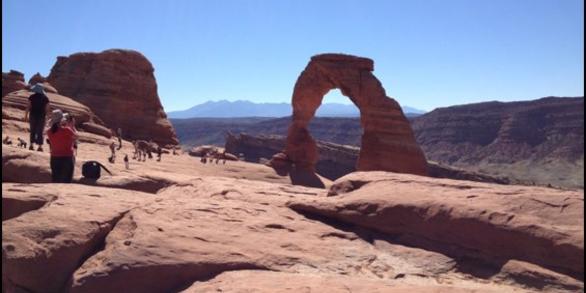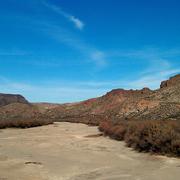Southwest Biological Science Center
Home
The Southwest Biological Science Center (SBSC) conducts quality, objective research on the lands and aquatic systems of the Southwest. This research can assist those who manage, conserve, and rehabilitate the arid regions of the nation. Click on SCIENCE in the sidebar to the left to explore SBSC science in more detail.
Terrestrial Dryland Ecology Branch
The Terrestrial Dryland Ecology (TDE) Branch of the SBSC studies the biology, ecology,and processes of semi-arid and arid lands (known as drylands). TDE researchers study plant-soil-water relationships and the wildlife found in drylands.
TDE ScienceRiver Ecosystem Science Branch & GCMRC
The River Ecosystem Science (RES) Branch of the SBSC, which includes the Grand Canyon Monitoring and Research Center (GCMRC), studies the biology, ecology, and processes of rivers in the western United States, with an emphasis on the Southwest.
GCMRC & RES ScienceSBSC Quick Links
Learn more about what we do by using the links below.
Grand Canyon Monitoring & Research Center (GCMRC)
Restoration Assessment & Monitoring Program for the Southwest (RAMPS)
SBSC Outreach & Education Products
A Field Guide to Biological Soil Crusts of Western U.S. Drylands (PDF)
SBSC ScienceNews
Friday's Findings - December 4 2020
The Smart Energy Webtool: Providing Relevant and Accessible Information to Support Energy Development and Management
Date: December 4, 2020 from 2-2:30 p.m. eastern time
Speaker: Mike Duniway, Research Ecologist/Soil Scientist, USGS Southwest Biological Science Center
...
New Outstanding in the Field Podcast
The USGS Ecosystems Mission Area brings you Outstanding in the Field, an original podcast series that tells stories about our science, our adventures, and our efforts to better understand fish and wildlife and the ecosystems that support them. In this episode we are talking about beaches in a place that most...
Unfamiliar Territory: Emerging Themes for Ecological Drought Research and Management
Novel forms of drought are emerging globally, due to climate change, shifting teleconnection patterns, expanding human water use, and a history of human influence on the environment that increases the probability of transformational ecological impacts.
Publications
Water temperature controls for regulated canyon-bound rivers
Many canyon‐bound rivers have been dammed and downstream flow and water temperatures modified. Climate change is expected to cause lower storage in reservoirs and warmer release temperatures, which may further alter downstream flow and thermal regimes. To anticipate potential future changes, we first need to understand the dominant heat transfer...
Mihalevich, Bryce A.; Neilson, Bethany; Buahin, Caleb A.; Yackulic, Charles; Schmidt, John C.Literature reviewed estimates of riparian consumptive water use in the drylands of Northeast Arizona, USA
This report provides the best estimates of riparian area evapotranspiration (ET) on the rivers and streams of the Navajo Nation by (1) quantifying the natural riparian vegetation water use within the Little Colorado River watershed using a literature search for comparable riparian ET estimates, and (2) in conjunction with the given area of stream-...
Nagler, Pamela L.Regional coordination between riparian dependence and atmospheric demand in willows (Salix L.) of western North America
AimPlants vary in their hydrological and climatic niches. How these niche dimensions covary among closely related species can help identify co‐adaptations to hydrological and climatic factors, as well as predict biodiversity responses to environmental change.LocationWestern United States.MethodsRelationships between riparian dependence and climate...
Butterfield, Bradley J.; Palmquist, Emily C.; Hultine, Kevin R.







